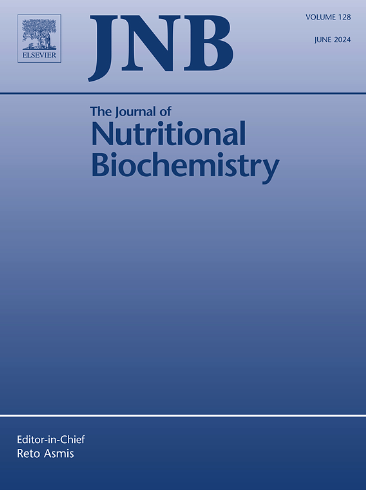Thermogenic adipose tissues: Promising therapeutic targets for metabolic diseases
IF 4.8
2区 医学
Q1 BIOCHEMISTRY & MOLECULAR BIOLOGY
引用次数: 0
Abstract
The ongoing increase in the prevalence of obesity and its comorbidities such as cardiovascular disease, type 2 diabetes (T2D) and dyslipidemia warrants discovery of novel therapeutic options for these metabolic diseases. Obesity is characterized by white adipose tissue expansion due to chronic positive energy balance as a result of excessive energy intake and/or reduced energy expenditure. Despite various efforts to prevent or reduce obesity including lifestyle and behavioral interventions, surgical weight reduction approaches and pharmacological methods, there has been limited success in significantly reducing obesity prevalence. Recent research has shown that thermogenic adipocyte (brown and beige) activation or formation, respectively, could potentially act as a therapeutic strategy to ameliorate obesity and its related disorders. This can be achieved through the ability of these thermogenic cells to enhance energy expenditure and regulate circulating levels of glucose and lipids. Thus, unraveling the molecular mechanisms behind the formation and activation of brown and beige adipocytes holds the potential for probable therapeutic paths to combat obesity. In this review, we provide a comprehensive update on the development and regulation of different adipose tissue types. We also emphasize recent interventions in harnessing therapeutic potential of thermogenic adipocytes by bioactive compounds and new pharmacological anti-obesity agents.

热源性脂肪组织:代谢疾病的治疗靶点:热源性脂肪和肥胖。
肥胖及其合并症(如心血管疾病、2型糖尿病(T2D)和血脂异常)患病率的持续增加,需要为这些代谢性疾病发现新的治疗选择。肥胖的特征是由于能量摄入过多和/或能量消耗减少导致的慢性正能量平衡导致白色脂肪组织扩张。尽管各种各样的努力预防/减少肥胖,包括生活方式和行为干预,手术减肥方法和药物方法,但在显著降低肥胖患病率方面取得的成功有限。最近的研究表明,产热脂肪细胞(棕色和米色)的激活或形成可能作为一种潜在的治疗策略,以改善肥胖及其相关疾病。这可以通过这些产热细胞增强能量消耗和调节葡萄糖和脂质循环水平的能力来实现。因此,揭开棕色和米色脂肪细胞形成和激活背后的分子机制,可能会为对抗肥胖提供潜在的治疗途径。在这篇综述中,我们提供了不同类型脂肪组织的发育和调节的全面更新。我们还强调了最近通过生物活性化合物和新的抗肥胖药物来利用热源性脂肪细胞治疗潜力的干预措施。
本文章由计算机程序翻译,如有差异,请以英文原文为准。
求助全文
约1分钟内获得全文
求助全文
来源期刊

Journal of Nutritional Biochemistry
医学-生化与分子生物学
CiteScore
9.50
自引率
3.60%
发文量
237
审稿时长
68 days
期刊介绍:
Devoted to advancements in nutritional sciences, The Journal of Nutritional Biochemistry presents experimental nutrition research as it relates to: biochemistry, molecular biology, toxicology, or physiology.
Rigorous reviews by an international editorial board of distinguished scientists ensure publication of the most current and key research being conducted in nutrition at the cellular, animal and human level. In addition to its monthly features of critical reviews and research articles, The Journal of Nutritional Biochemistry also periodically publishes emerging issues, experimental methods, and other types of articles.
 求助内容:
求助内容: 应助结果提醒方式:
应助结果提醒方式:


